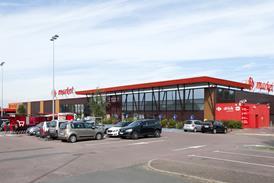We, the real estate industry, have reached an inflection point – one where our approach to environmental and social factors can ensure that the built environment becomes a force for good.

In recent decades, the real estate industry has been a huge contributor to carbon emissions, without sufficient attention being paid to its actions. The current heatwave engulfing much of continental Europe, parts of China and North America is a timely reminder that efforts to tackle the climate emergency need to be intensified. The sector is now at a turning point; today, the industry has a significant opportunity to redefine its role within society and enact lasting positive change. But to do so, it must first bring its efforts towards net zero.
Wind and solar power and battery storage systems are becoming a bigger part of the future of energy, and other sources of renewable energy will emerge. But to limit emissions, it is important to work with the built environment that already exists. Of the stock of buildings that exist today, it is estimated that around 85% will still be there in 2050. So, to meet global carbon targets, retrofitting both residential and commercial buildings wherever possible will be essential.
Retrofitting must take place against a backdrop in which regulations are modernised to spark the right behaviours. Here, the industry has an obligation to lead the way in establishing the right approach, so that regulators can follow and back up efforts. Emission-limiting regulation is coming fast and will inevitably grow, but the key – while acknowledging the need to adapt as technology evolves and regulation deepens – is to recognise that the time to deliver on our actions is now.
An essential lever to enable us to act now is engagement. As owners, we’re unable to implement net zero unilaterally without an effective dialogue with those occupying our properties. Whole-building decarbonisation, reducing our occupier emissions and aligning with forthcoming regulation all require proactive partnerships. For far too long the real estate sector has adopted a misplaced, silo mentality, divorced from the real activity taking place in the built environment – passively collecting rent and operating long leases. We are now actively engaging with those individuals and businesses in our buildings, and there’s a shared goal to move away from dependence upon carbon.
This puts us in a position to make a positive difference; by bringing our existing buildings with us in the journey to net zero, by selectively adding new buildings that will stand the test of time, by harnessing useful technology and innovation and by encouraging sustainable behaviours.
With this, though, it is important not to neglect the ‘S’ in environmental, social and governance (ESG). Net zero carbon goals will not be met unless decarbonisation efforts are intrinsically linked to the creation of a more equitable society. This is about achieving a just and inclusive low-carbon transition. There is work to do here. The measurement of social impact, for example, remains nascent and, therefore, a challenge. As an essential first step, the industry needs to come together to agree on what social impact really means, to avoid the rising risk of ‘social washing’.
One of the key aspects of social impact is the intentionality and additionality of actions in terms of the effect upon the local community.
One way to do this is through adopting a place-based approach. This means taking an asset-level view as to how to intentionally contribute, deliver and catalyse positive outcomes that are commercially aligned. All communities face different challenges and have different wants and needs – it’s therefore essential that the delivery is adapted to consider the specific asset, and its context.
The extent to which we can act with purpose to create a better future is clear, but to do so the industry must make sure that it’s in a position to participate across the entirety of the built environment; not just shops, offices and industrial property, but all tenures of residential property, social and economic infrastructure, including renewable energy. Done well, the industry should be considered both an attractive asset class for investment and a force for good.
Bill Hughes is global head of real assets at Legal & General Investment Management































No comments yet